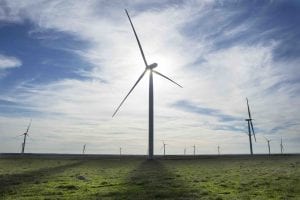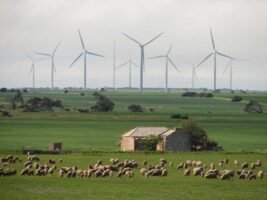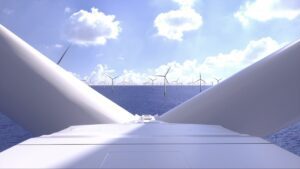Spanish-based offshore wind company Ocean Winds says it is undaunted by the challenges posed by Australia’s as yet unformed industry, saying it’s worked in greenfield geographies before.
The company – a joint venture between Engie and EDP – is confident Australia has the capability to build a “new community of workers”, says Ocean Winds chief development officer Rafael Munilla.
“We are a Spanish company, but our asset base is not in Spain. All of the markets were new markets for us at some point or another. We were able to face the challenge and had to deliver to leave our comfort zone,” he says.
“We foresee the potential of offshore wind as an industry in Australia. This means that in creating a market we will need to create and form new talents, work hand in hand with universities, etc.”
Ocean Wind lodged applications for three projects in Victoria’s Gippsland offshore wind zone, the first offshore zone in Australia to go ahead.
It also offered a warning that if Victoria, and Australia, want to avoid delays caused by a global lack of boats, developers need enough time to prepare.
“There won’t be a problem if projects are allocated far enough in advance. The industry will be able to adapt to demand, but demand must be firm and sufficiently upstream, so we need not only to plan quickly and precisely, but above all to allocate projects to developers as quickly as possible,” Munilla says.
“It’s important to note that it takes less time to build a vessel than it does to obtain the necessary authorisations to build a project.”
Preparing for a scrap over staff
Ocean Winds will lean on 50 per cent owner Engie to source talent who can be retrained, given its experience as the owner of the Hazelwood coal power plant and connections to the Morwell community.
EDP Renewables is the other shareholder in Ocean Winds.
If it wins a permit for one or more of its three applications, recruitment will be the first step Ocean Wind takes but it says its workforce will be a mix of local and existing global employees.
“As part of our application, we developed a Resource Management Plan in which we have analysed in detail the positions, roles and capabilities that will be needed during each phase of the project, adapting to the current Australian market and helping to boost and transition the current capabilities of the workforce from other sectors,” Munilla says.
Creating from scratch a qualified workforce of marine architects, surveyors, engineers, builders and a swathe of other skilled people will be a critical challenge for the Australian offshore wind industry, as it competes with offshore gas for people with similar talents or find ways to give entirely new skills to workers.
Australia will be desperately in need of marine, civil and electrical engineers, mechanical naval architects, marine spatial planners, and people to work on GIS mapping, ports infrastructure, operations and maintenance, and workers in an onshore industry to build specialised cables and substations.
Already the likes of Flotation Energy, which has applied for a Victoria feasibility studies permit for its proposed Seadragon project, are partnering with universities to have first pick of graduates.
The team behind the Star of the South have mapped the vessels and suppliers in Gippsland that a future offshore industry can tap, and where existing skills overlap with what will be needed.
It found 70 per cent of the coal workers in the region and 60 per cent of oil and gas workers have a high or very high overlap with the needs of the budding industry.










